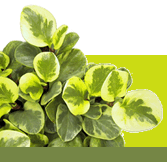|
Herbarium collections
 Pressed dried plants, well labeled and stored under standardized conditions in scientific institutions serve as taxonomical reference and as research specimens. In the past, herbaria were only accessible to researchers. Internet makes some of the herbaria virtually accessible to everybody. Pressed dried plants, well labeled and stored under standardized conditions in scientific institutions serve as taxonomical reference and as research specimens. In the past, herbaria were only accessible to researchers. Internet makes some of the herbaria virtually accessible to everybody.
 Naturalis Includes the collections of the former herbaria of Leiden (L), Utrecht (U), Wageningen (W) - 120 Peperomia type specimens records and over 4000 non-types Naturalis Includes the collections of the former herbaria of Leiden (L), Utrecht (U), Wageningen (W) - 120 Peperomia type specimens records and over 4000 non-types
 Harvard University Herbarium Holds the collections of the former Gray Herbarium (GH) and the Arnold Arboretum Herbarium (A) - more than 400 type specimen records Harvard University Herbarium Holds the collections of the former Gray Herbarium (GH) and the Arnold Arboretum Herbarium (A) - more than 400 type specimen records
 New York Botanical Garden Herbarium - over 13,000 specimen records New York Botanical Garden Herbarium - over 13,000 specimen records
 Missouri Botanical Garden - by the nomenclatural database w³ TROPICOS you have access to the data of herbarium specimens. Missouri Botanical Garden - by the nomenclatural database w³ TROPICOS you have access to the data of herbarium specimens.
 Swedish Museum of Natural History - over 1500 Peperomia records with more than 300 type specimen records Swedish Museum of Natural History - over 1500 Peperomia records with more than 300 type specimen records
 Other important herbaria concerning Peperomias are Berlin (B), British Museum (BM), Meise (BR), Genève (G), Kew (K) and Paris (P). Other important herbaria concerning Peperomias are Berlin (B), British Museum (BM), Meise (BR), Genève (G), Kew (K) and Paris (P).
 The Index Herbariorum gives a list of herbaria of the world. The Index Herbariorum gives a list of herbaria of the world.
Ex situ collections of living plants
 Living plants not growing in their natural environment (but ex situ!) serve educational and scientific purposes. Sometimes nearly extinct species are cultivated before their reintroduction in nature. For Peperomias this is actually the case only with Peperomia wheeleri. Living Peperomia collections may be found in botanical gardens. Two Belgian botanical gardens have quite an important collection: Ghent and Meise both grow more than 100 different species. Although you will find Peperomias in the greenhouses of most botanical gardens they often belong to study collections not accessible to the public. Living plants not growing in their natural environment (but ex situ!) serve educational and scientific purposes. Sometimes nearly extinct species are cultivated before their reintroduction in nature. For Peperomias this is actually the case only with Peperomia wheeleri. Living Peperomia collections may be found in botanical gardens. Two Belgian botanical gardens have quite an important collection: Ghent and Meise both grow more than 100 different species. Although you will find Peperomias in the greenhouses of most botanical gardens they often belong to study collections not accessible to the public.
 There are some private Peperomia collections, a great deal of them focusing on succulents. And of course you have the assortments offered by commercial growers. There are some private Peperomia collections, a great deal of them focusing on succulents. And of course you have the assortments offered by commercial growers.
|

